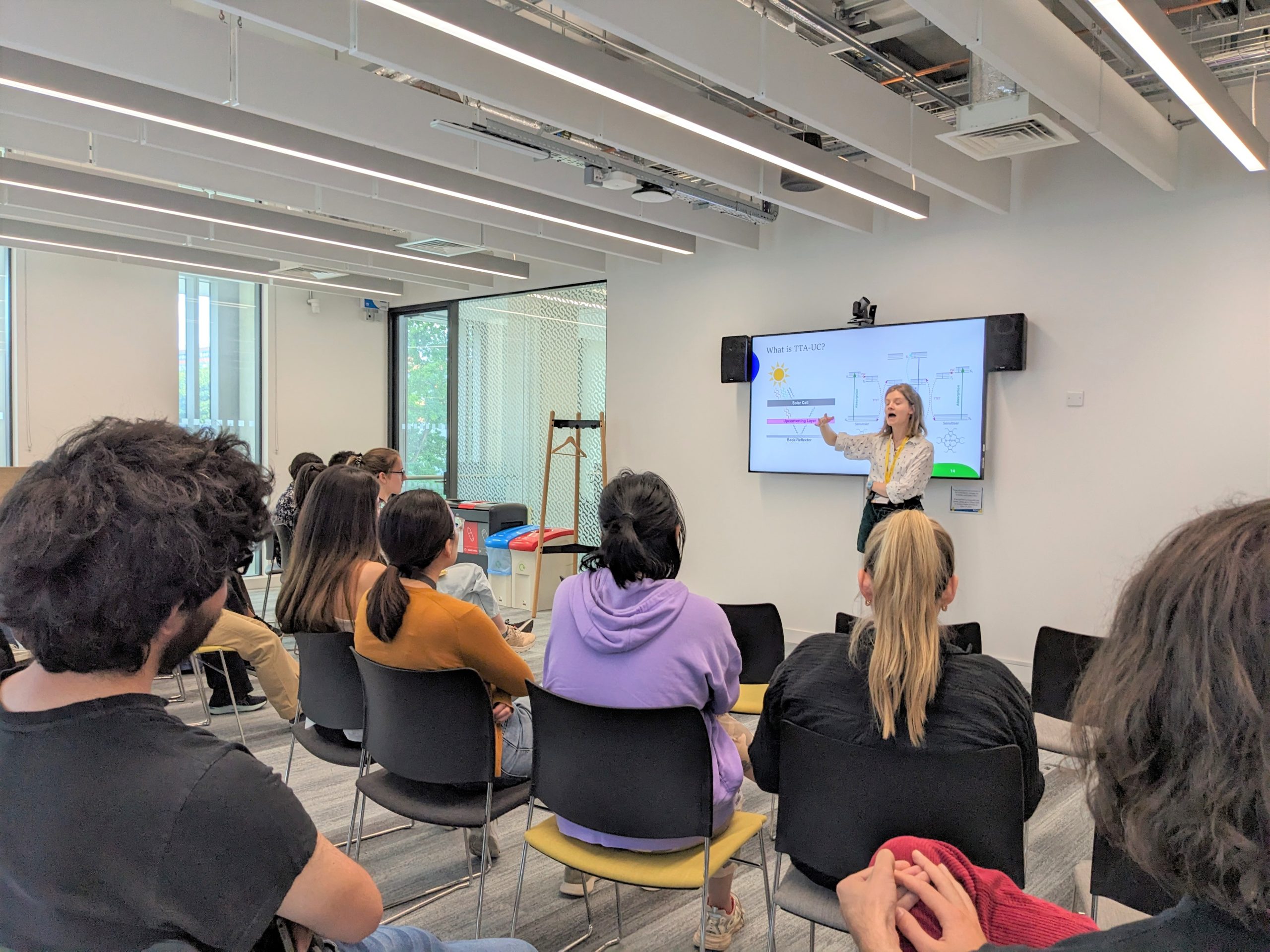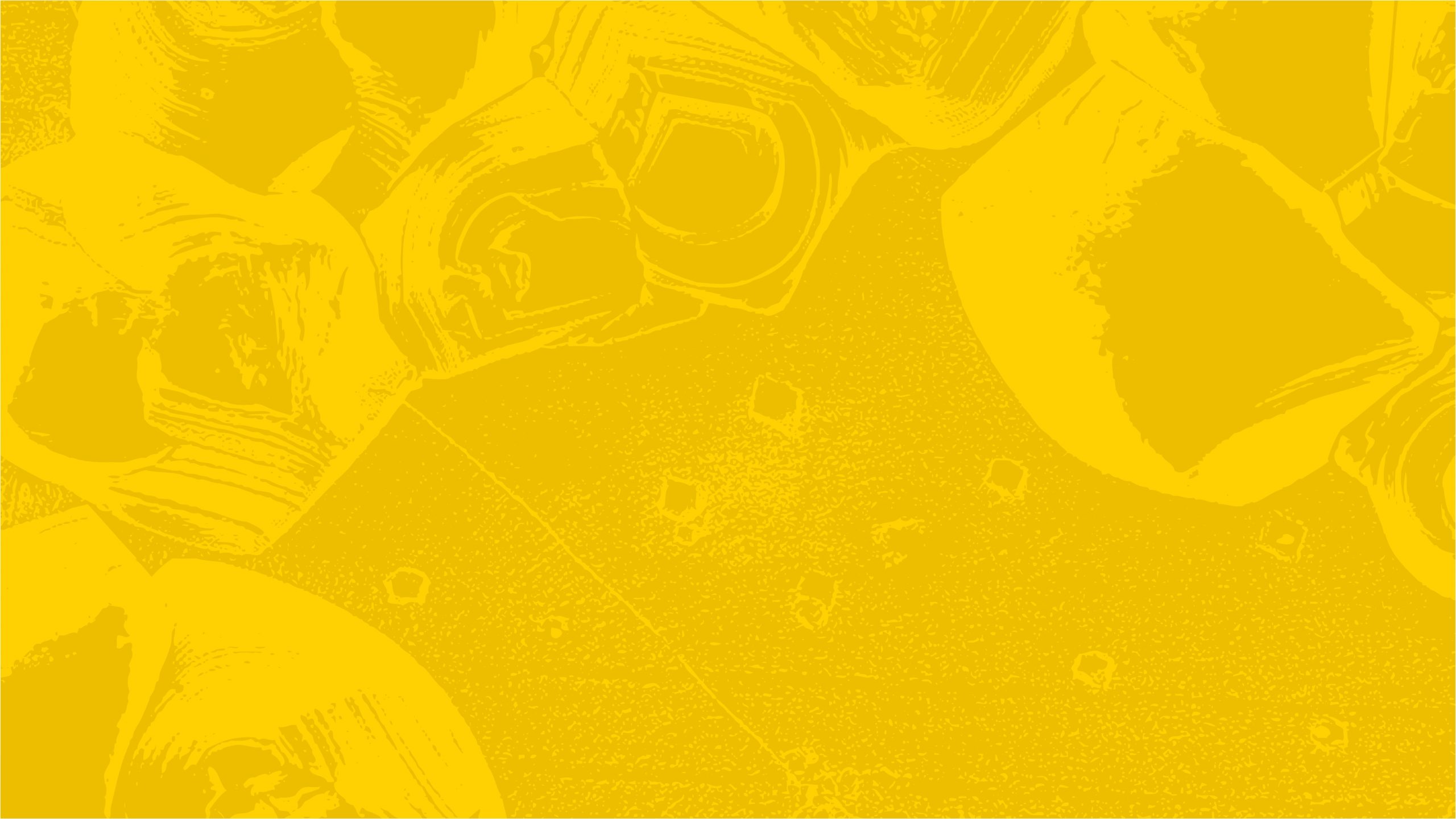On Thursday 22 June, Royce was pleased to host the 2023 winner of IOM3’s Young Person’s Lecture Award, Georgina Burgoyne Morris. Georgina had won the award for her talk ‘Stimuli-responsive polymers as self-healing materials’.
Organised by IOM3 and sponsored by The Worshipful Company of Armourers & Brasiers and the Henry Royce Institute, the Young Persons’ Lecture Competition provides an opportunity for students and young professionals to deliver a short lecture on a topic of their choosing within materials science.
Georgina is a first year PhD student at the Department of Materials Science & Metallurgy at the University of Cambridge. Her talk explored how through tuning the chemistry of a polymer can make it intrinsically self-heal under ambient conditions, or in response to external stimuli such as heat or light. The implications of this research could lead to improvements in the lifetime recyclability of these polymeric materials, reducing waste and production costs.

We caught up with Georgina to celebrate her achievement and to find out more about her journey into materials science.
Tell us about the steps you took to get into materials science.
I actually had very little knowledge about the subject prior to going to university. Chemistry and physics were always my strong subjects in school so it felt natural to pursue further education in a STEM based degree. I went on to do natural sciences at Cambridge, which provided a lot of options in terms of what I could choose to study as you’re not required to specialise too early on. I was able to pick three subject areas to focus on and having chosen to do chemistry and physics I decided to pick a module in materials. I really enjoyed the topics we covered and felt as though it covered an interesting intersection between chemistry and physics.
The materials modules I took allowed me to learn a lot about materials that had been used throughout history for their properties in a variety of demanding and specialised environments. I found it interesting that at the time, no one understood why these materials functioned the way they did, but with current technology we are privileged enough to be able to scrutinise these materials, affording us an understanding of the properties and behaviours that make them so different from one another and make them appropriate for use across a diversity of activities.
How did your interest in polymer science develop?
I didn’t get to cover a lot of polymer science in my undergraduate degree, but between my 3rd and 4th year I took a summer placement with the Photoactive Materials group. The group were looking into luminescent layers on solar cells, and while working alongside them, I found that this area combined the elements of chemistry and physics that I was particularly interested in.
I went on to do my master’s project in a different area of materials science, but when the opportunity arose to pursue a PhD with the Photoactive Materials group, focusing on polymer science, I decided that was something that would interest me. Even though the project I currently work on concerning self-healing host materials is quite different to what I did in the internship, working in the lab provided me with invaluable experience and a really strong practical knowledge base that has served me well as I’ve progressed with my studies.
What made you want to enter the competition?
It was more of a personal challenge I set for myself. I enjoy talking about science with my friends and family and I get a lot out of having those really engaging conversations, so I thought it might be good to challenge myself to improve my public speaking abilities. I didn’t expect much to come of it as I’d entered just for the experience. It was quite scary at first but I’m glad I took the risk, and in the end, I gained a lot from participating.
How did you settle on a topic for your lecture?
I’d done a lot of reading on the topic in preparation for my PhD so I had a good level of familiarity with the subject matter.
I also think the subject of self-healing polymers is engaging and appealing, so it raises a lot of interesting questions from the audience. I liked that the competition gave me an opportunity to advocate for my specific research area in front of an audience of my peers where I can assume a base level of scientific knowledge. It’s cool to be able to demonstrate why the areas I’m interested in should be something other people are interested in, and I loved engaging in discussion with the audience as a lot of the time, the questions they present provide an interesting challenge, allowing me to look at the topic in a way I possibly hadn’t considered before.
What are your ambitions following your PhD?
I definitely want to pursue a career involving science communications, and this experience with the lecture competition has solidified that. I think there’s a fair amount of cynicism surrounding people’s attitude to science and people’s willingness to engage with science. In my opinion, most people are interested in science and they do enjoy learning. I want to play a part in deconstructing this negativity and showing that anyone can interact with these topics. I want to show that science can be creative and fun, and that you can be playful with how you approach it. There’s no need for perfectionism at this level!
It’s important to acknowledge that there’s traditionally been a lot of elitism surrounding science, especially regarding the assumption that you have to be extremely clever to enjoy it or that science is inaccessible to most people. I think that stereotype is slowly being broken down though, and I think most people are curious about the world around them anyway. It just requires the information to be presented in an accessible and engaging way. I like that materials science has clear real world applications as this creates a useful framework that provides an easily accessible starting point from which to explore. This would definitely be the direction I’d like to take my career in.
What advice would you give to anyone interested in pursuing a career in materials science?
Stay persistent, take risks, and find a community! I think there’s been an attitude of exceptionalism within science for a long time which has discouraged a lot of people from engaging with the subject. Pursuing science can be very hard work and requires a lot of dedication, so you shouldn’t be discouraged by the myth perpetuated around natural brilliance or by the stereotype of a successful scientist being an old, white, solitary man. I think this construct is particularly harmful to people from marginalised groups and produces a sort of imposter syndrome in otherwise capable people. This has resulted in a lot of brilliant and valuable input being overlooked or missed.
Materials science and the STEM world more generally will always benefit from a diversity of minds working together to solve these complex problems. It’s therefore important to take a stand regarding diversity in the sciences so that future young people feel they are represented and accepted in the community. Don’t doubt yourself!
IOM3’s Young Person’s Lecture Award was sponsored by The Worshipful Company of Armourers & Brasiers and the Henry Royce Institute
To watch Georgina’s talk click here



